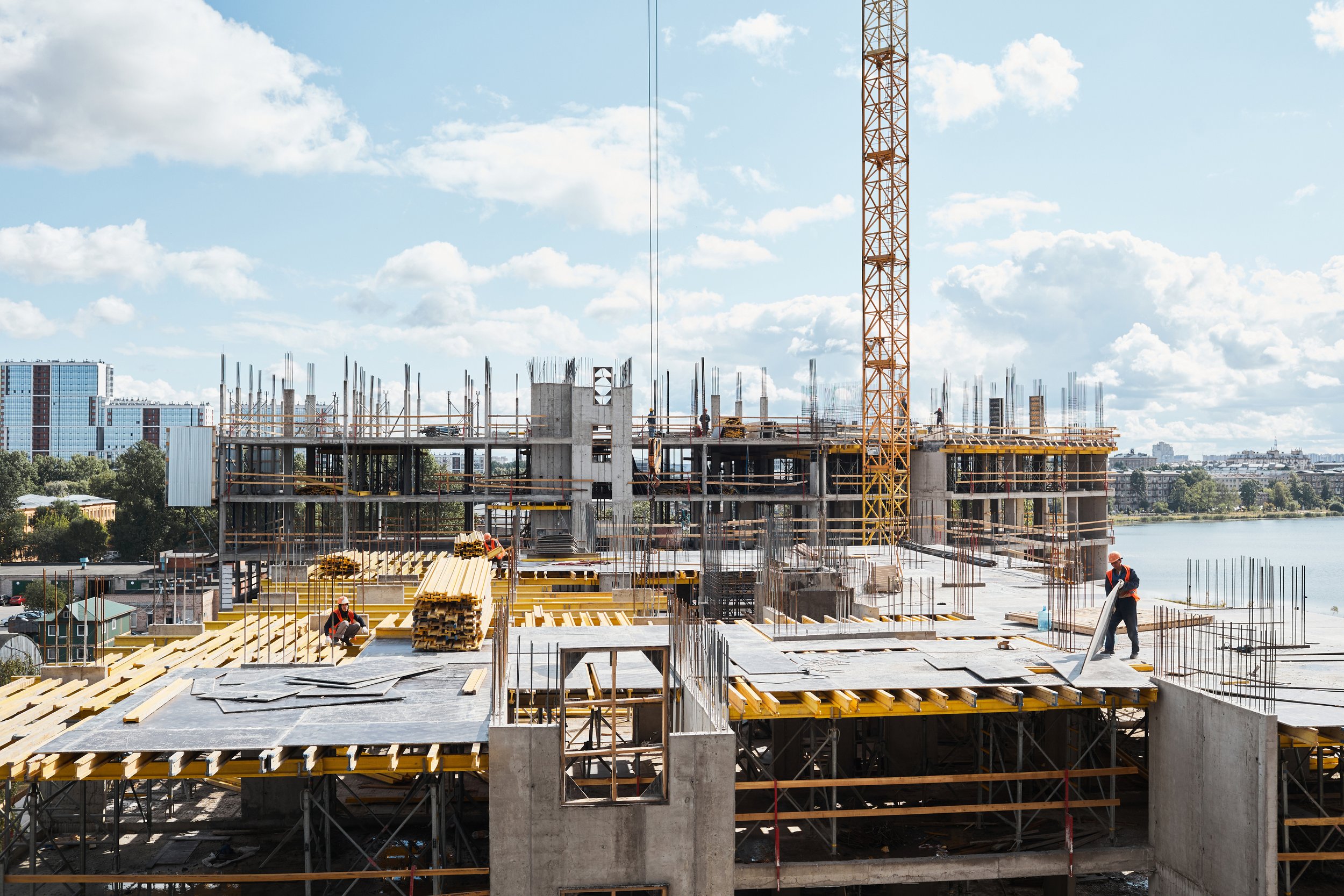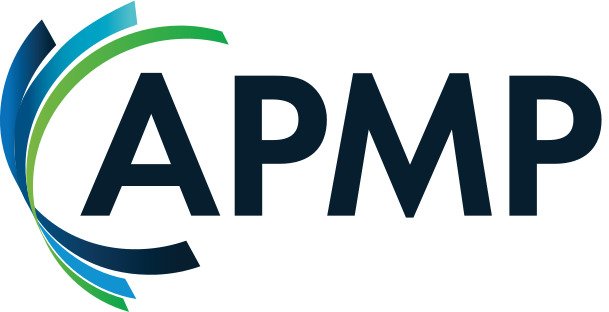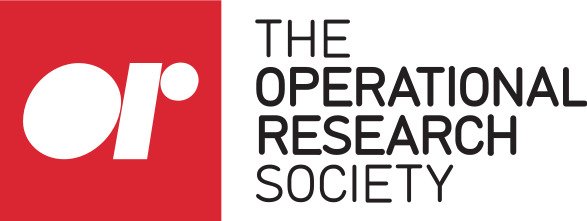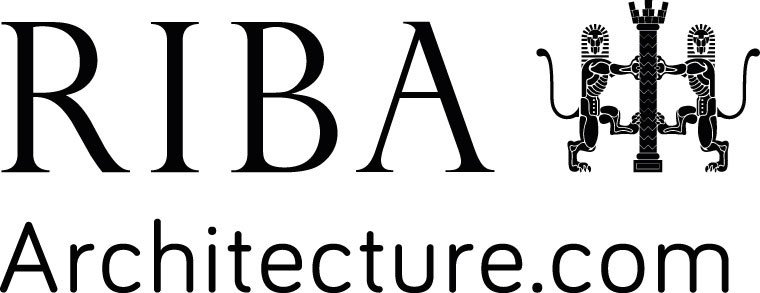
Health, Safety and Wellbeing
Successful bidders demonstrate how they:
Develop and implement a clear, concise HSW policy and risk register, produced in guidance with HSE’s HSG150 and reflecting legal/regulatory requirements and industry best practice.
Establish a clear governance structure for HSW accountability, supported via dedicated HSW committees and steering groups, who provide strategic guidance.
Communicate and coordinate HSW arrangements via pre-site-visit info (e.g., copy of the site plan); tailored site, PPE, and role inductions; site signage; and noticeboards, newsletters, and company website.
Unlock efficiencies through HSW initiatives and continual improvement, using process improvement methodologies e.g., Kaizen or Lean Six Sigma to identify and resolve inefficiencies.
Retain and advance the HSW competency and knowledge of their workforce through toolbox talks and tailored staff training plans, managed via training matrices.
These questions enable bidders to present their:
ISO 45001:2018 accredited H&S management system.
HSW awards, such as those issued by RoSPA, Safety & Health Excellence (SHE), and British Safety Industry Federation (BSIF).
Approach to measuring the hazard burden and HSW performance using leading/lagging indicators and KPIs/SLAs. Performance is benchmarked to recognise excellence, identify any non-conformance, and correct any shortfall.
4-stage process to co-developing RAMS and SSOW with their workforce: development, consultation, piloting, and implementation.
Rigorous approach to ensuring subcontractors/suppliers adhere to HSW policy/procedures e.g., maintaining a RIDDOR incident frequency rate (IFR) of <0.5% over the last 3 years.
Approach to designing and implementing extensive and compliant Construction Phase Plans and tailored role and site induction plans.

Risk
Successful bidders demonstrate how they:
Adopt a phased approach to risk control, assessment, and mitigation in guidance with ISO 31000:2018 and IEC 31010:2019.
Proactively manage risk by fostering a culture of risk awareness and ownership e.g., by involving their workforces in the development of RAMS, risk registers, and encouraging near-miss reporting through a non-punitive approach.
Elect internal risk champions, form risk steering groups/committees, and conduct internal and external audits to effectively identify, assess, manage and/or mitigate all project risk.
Equitably distribute risk between project stakeholders, wherever possible, in guidance with best practice published by the likes of the FIDIC. Such risks include quantities, unforeseen ground conditions, and force majeure.
Recognise and reward employees and teams who actively contribute to risk identification and management, providing incentives to encourage ongoing participation.
These questions enable bidders to present their:
Comprehensive risk management plan, detailing the project’s risk strategy, risk ownership, particular risks, and how they will be managed, reviewed, and reported on.
Internal and external construction site audit process, to ensure their approach to health and safety is being followed and compliance with legislation/regulations e.g., CDM Regulations 2015 is maintained.
Organisational structure for risk responsibility and accountability, including elected Risk Champions, Risk Committees, and Risk Steering Groups.
Comprehensive risk registers, RAMS/SSOW, and risk matrices
Approach to risk dependency analysis e.g., producing a risk dependency matrix or a network diagram to map identified risk dependencies. This improves their understanding of how risks interact, enabling bidders to better manage risk.

Collaborative Working
Successful bidders demonstrate how they:
Establish a joint relationship management plan (JRMP) with other contractors on-site and their supply chain, defining collaborative working practices and behaviours.
Use Responsible, Accountable, Consult, and Inform (RACI) matrices to ensure clear understanding of roles and responsibilities.
Appreciate all stakeholder perspectives and build their backing through stakeholder workshops and focus groups.
Develop and implement their Community Engagement Plan and measure its efficacy through Community Impact Assessments.
Unlock efficiencies through power sharing and distributed leadership, empowering employees to make decisions within their areas of expertise.
Adopt a collaborative approach to soft landings by appointing a soft landing’s champion and coordinator.
These questions enable bidders to present their:
ISO 44001 accredited Collaborative Business Relationship Management System, which has contributed to their receipt of collaboration awards issued by the likes of Constructing Excellence, CIHT, BCIA, and CIBSE.
Use of project collaboration tools e.g., 4Projects, Sypro, CEMAR, Aconex, and Conject to manage information and correspondence flow between various parties.
Strategy to collaborative working by establishing joint objectives, risk management structures, and exit strategies with clients/other contractors. Regular stakeholder workshops and progress reviews provide a forum for discussing project-related issues; identifying and resolving any conflict; and making informed decisions collaboratively.
Integrated use of BIM (mock-ups, simulations, and reviews), with features such as clash detection and digital twins helping to improve collaboration, avoid rework, streamline workflows, reduce risk, and generate efficiencies.

Quality
Successful bidders demonstrate how they:
Establish a clear governance structure for quality e.g., a Quality Committee, elect an internal design champion, and recruit a RIBA Client Design Adviser, to provide expert advice and help protect the client’s interests.
Foster a positive quality culture by implementing a Quality Management Plan, produced in guidance with ISO 10005:2018, that adopts a proactive vs. reactive approach.
Empower staff to speak out about any sub-standard work and reward staff who showcase exceptional performances in their quality of workmanship.
Develop and implement method statements that are fully compliant with ISO 9000 quality standards and reflective of best industry practice.
Report on the quality of work via workshops on quality, monthly quality meetings, and findings from quality audits. Performance is benchmarked against industry averages, KPIs, and SLAs to continually drive quality standards upward.
These questions enable bidders to present their:
ISO 9001:2015 accredited quality management system, which ensures consistently high quality standards that meet client, statutory, and regulatory requirements.
Rigorous Inspection and Testing Plan (ITP), which defines roles and responsibilities and identifies hold points throughout the construction process.
Quality awards, such as those issued by CQI, ICWCI, and NHBC.
Approach to maintaining high quality standards via routine monitoring, measurement, inspection, and role-specific workforce training.
ISO 10002:2018 accredited complaints-handling process, to effectively manage and resolve complaints in a consistent, responsive, satisfactory manner.
Approach to minimising material defects e.g., by selecting suppliers with a track record of meeting Acceptable Quality Levels (AQLs), and by evaluating quality control sampling plans.

Innovation and Added Value
Successful bidders demonstrate how they:
Capture innovation through feedback mechanisms, exhibitions and conferences, and observations of best practice as a member of industry organisations e.g., CIOB.
Foster an innovative culture amongst their staff e.g., through open innovation challenge days, employee representative meetings, and feedback mechanisms. Staff insights and suggestions are collected and reviewed to identify areas for innovation.
Establish a structured framework for managing and implementing innovative working methods, including processes for idea generation, evaluation, selection, piloting, and implementation.
Implement pilot projects to test and validate innovative working methods in a controlled environment before full-scale adoption.
These questions enable bidders to present their:
Innovation management system, produced in guidance with ISO 56002:2019, helping them to create new value propositions and maximise their potential in a structured manner.
Use of ISO 19650 certified BIM, with features such as clash detection and digital twins helping to avoid rework and improve collaboration, H&S, project handover, and asset management.
Use AI and machine learning to generate predictive analytics, optimising construction workflows and decision making.
Use of virtual and augmented reality to improve workforce training, collaborative working, and stakeholder engagement.
Participation in Knowledge Transfer Partnerships (KTPs), linking their innovation ideas with academic expertise and one of Innovate UK’s Knowledge Transfer Advisers to help realise these ideas.

Contract Delivery
Successful bidders demonstrate how they:
Clearly define accountabilities and responsibilities that are mutually consistent and traceable across all levels of management.
Synchronise BIM data with their Enterprise Resource Planning (ERP) systems to improve workflow streamlining and visibility, accurately monitor project status vs. project schedule, track labour costs, and manage purchased materials.
Identify and select subcontractors through a rigorous selection process and pay them promptly, being members of the UK Prompt Payment Scheme.
Implement a comprehensive Material Logistics Plan (MLP), covering supply routes, handling, storage, security, use/reuse, recycling and disposal.
Manage peaks and troughs in workload, accommodating changes and overcoming delay by having a sufficient capacity of appropriately skilled staff.
Mobilise/demobilise the project as a whole and in phases.
Embed equality and diversity, anti-slavery, and whistleblowing procedures within the project.
Execute a BIM-based handover by producing a BIM Execution Plan; developing a coordinated BIM model; defining data requirements for handover e.g., required level of detail (LOD) and information (LOI) for each asset; and implement BIM-enabled processes e.g., clash detection, quantity takeoff, 4D scheduling, and construction sequencing.
Update the BIM model with as-built information, maintenance records, and any future modifications to maintain an accurate digital twin of the building.
Regularly report on project performance to stakeholders via KPI/SLA dashboards and progress reports.
Implementing Government Soft Landings, ensuring a seamless, optimised transition from construction to occupation.
Approach compensation events in an equitable, constructive manner.
Provide training and support to facilities management personnel for operations and maintenance.

Social Value
Successful bidders demonstrate how they:
Effectively implement their social value policy on projects, using ISO 26000 as a framework.
Hold social value planning workshops early in projects with local communities, to co-create objectives and action plans with residents and agree clear and tangible tools for measurement.
Embrace the social value outcomes outlined in PPN 06/20.
Deliver work-based learning and conduct talks to local schools and colleges, inspiring the next generation into their industry.
Use social impact frameworks, including Social Accounting and Social Return on Investment (SROI).
Establish a social value committee, who meet monthly to monitor social value progress in projects.
Hold supply chain ‘meet the buyer’ events to identify new, local suppliers, supporting local economic growth.
Are signatories to a number of employment charters, such as Ban The Box, The 5% Club, and Disability Confident, and are recognised as a Top 100 Apprentice Employer.
Directly employ local apprentices and full-time staff within their organisation, paying all staff the National Living Wage or higher.
Are committed to the World Green Building Council Net Zero Carbon Buildings Commitment.
Work with local councils to develop Minority Improvement Plans, to widen access to employment opportunities among underrepresented groups within their workforce.
Use data from the Indices of Deprivation, NOMIS, and ONS to target career development of students in schools in underrepresented and poor social mobility areas.
Develop social value impact reports, produced by designing and applying indicator frameworks, impact maps, and outcome-monitoring systems.

Stakeholder Management
Successful bidders demonstrate how they:
Map all project stakeholders to identify to inform engagement strategies and establish agreed lines of communication with stakeholders, appropriate to their requirements.
Develop and implement their stakeholder engagement plan, which details how each stakeholder group will be effectively engaged throughout the project. Frequency, methods, and information reported will be defined.
Directly involve stakeholders through scheduled stakeholder workshops and on-site activities, such as site awareness briefings, tailored site inductions, safety meetings, inspections, and safety walks.
Accelerate clear stakeholder communication by giving them transparent access to live KPI/SLA dashboards and project data.
Erect on-site offices for client representatives, to foster stakeholder communication on a daily basis.
Use virtual and augmented reality to improve stakeholder engagement, providing immersive 3D walkthroughs of the building/asset. Data-rich digital mock-ups provide stakeholders with a clearer construction context, improving decision making.
Work with stakeholders to improve value for money e.g., delivering an NEC3 Option D target cost contract with a pain/gain mechanism, remeasured against a BoQ, incentivises contractors to deliver projects as efficiently as possible.
Review existing strategies and plans, such as sustainable community strategies, Local Development Frameworks (LDFs), corporate plans, place surveys, and residents’ panels, to help meet stakeholders’ explicit and implicit needs/objectives.
Demonstrate accountability by being responsive to stakeholder inquiries and promptly addressing any stakeholder concerns or issues, satisfactorily resolving any complaints or conflict in guidance with ISO 10002:2018.

Workforce Capacity, Capability and Management
Successful bidders demonstrate how they:
Use competency frameworks published by the likes of CITB to define workforce competence requirements.
Assess initial competency during their role induction process, in which staff are tested on their role-specific knowledge. Findings are formalised into tailored training plans.
Deliver tailored workforce training e.g., SAFED training for freight drivers and maintain training/certifications through training matrices, ensuring staff receive refresher training/recertification before expiry.
Encourage employee engagement via toolbox talks, team meetings, and feedback sessions, and appreciate employees’ contributions to create a positive, inclusive work environment.
Further manage their workforce by developing staff competency through CPD, rewarding exceptional performances in work, and promoting work-life balance e.g., flexible schedules or remote work options.
Develop comprehensive workforce plans to outline a project’s labour requirements, helping to avoid under/overutilisation of resources, which can lead to inefficiency and high costs.
Use workforce management software such as DataScope, Softworks, and Procore to streamline labour schedules and reduce admin burden.
Stretch their workforce capacity by drawing from a bank of appropriately qualified subcontractors/reserve staff. Subcontracted staff undergo additional training courses, where required, to ensure capability to deliver before beginning work.
Use plant/equipment that use the Internet of Things (IoT), that enable managers to identify plant that is not operating at its fullest capacity, and any operators who may be using plant inefficiently and require refresher training.
Use fleet tracker management systems e.g., Verizon Connect to improve workforce response times, crew productivity, and decrease fuel consumption.

Supply Chain Management
Successful bidders demonstrate how they:
Identify and select high-quality, sustainable supply chain partners based on their capabilities, reputation, experience, and willingness to work under the bidder’s management systems.
Conduct thorough due diligence checks and continual review of supply chain partners, including site visits, ensuring their adherence to quality and sustainability standards.
Map their full supply chain, from subcontractors and suppliers to raw materials and labour, considering logistics, regulatory approvals, and other ancillary factors.
Enhance supply chain visibility by using enterprise resource planning (ERP) software e.g., Archdesk and COINS, to track and monitor the movement of materials/products.
Build supply chain resilience by identifying potential supply chain risks and developing mitigation strategies accordingly e.g., disruptions in material supply, geopolitical issues, or regulatory changes.
Manage supply chain performance via hard-issue KPIs/SLAs e.g., call-out time, service quality (against agreed SLAs), and account management.
Use supply chain digital twins to conduct supply chain stress tests, to identify and mitigate business continuity risks and bottlenecks, and optimise inventory, minimising delays/shortages.
Effectively manage supply chain partners by scheduling regular coordination meetings to review leadership, systematic competence, and commitment to the bidder’s standards.
Embed economic and sustainable procurement practices within their operations e.g., by adopting the Fair Payment Charter.
Conduct PESTLE or STEER analysis to identify potential opportunities and risks associated with each factor, helping bidders make informed supply chain decisions, develop strategies, and capitalise on market trends or industry-specific factors to gain a competitive advantage.
Our Construction Model Answers
From our analysis of over 11,320 construction tender questions, we recorded a clear pattern of repetition – most buyers want to know the same things about bidders, such as their approach to quality, risk, and health and safety.
Our construction model answers condense winning features from these bids, ensuring you answer tender questions with the best content possible.
The Value of Our Model Answers
Our model answer packages will save you time and costs whilst growing your profit. They are approximately 3x faster than conventional bid writing services, based on client experience.
If you were winning 3/10 bids, you will now win 9/30 bids with the same overhead, due to faster production.
Clients switching to our model answers have also experienced a 30% increase in bid success on average. Those winning 9/30 bids now win 12/30 bids.
With no change in resource and price, you can go from 3 contract wins to 12 contract wins.

Bespoke Bid Writing
Win construction contracts through our no-win no-fee and success-based fee offers.
We understand what Buyers want to see in winning bids and know how to present that information concisely and effectively. Every bid our clients submit is backed by proven, winning content.
£2 billion
Contract value we have won for our clients.
Your answers will draw on our unrivalled collection of model answers, best industry practice, local strategies/plans, and be fully aligned with the award criteria, maximising your scoring potential.
We understand the risks/challenges bidders face in producing winning bids, and we are confident in the quality of our work. Therefore, we offer no-win no-fee and success-based fee options to qualifying bidders.
Our wholistic end-to-end service will support every aspect of your bid, providing an invaluable double-check of and positive challenge to your bid.
We combine our sector knowledge and bid expertise to consistently create winning bids for our clients.
Expertise you can rely on
We employed qualified construction professionals, including civil and electrical engineers and project management professionals, who are highly qualified and experienced in producing winning construction bids. Our bid experts combine their sector knowledge with bid writing expertise to deliver coherent, well-informed model answers and responses to construction tenders.
We are members of IET, IEEE, APM, RIBA, and CIPS and review published reports and white papers to identify and integrate current and emerging best practice into our model answers and bids. This ensures they remain informed, up-to-date, and fully aligned to buyers’ requirements.
We also employ senior bid experts who are APMP Mentors, helping to shape and move the bidding industry forward.
You will benefit from strategic conversations with our APMP-qualified bid experts about key construction question themes e.g., quality, health and safety, risk, and social value, making certain your bid delivers in every scored aspect.
Our bid team review each bid in isolation, benchmarking it against the marking criteria and best practice, ensuring your bid scores maximum marks.













Using AI to Enhance Our Model Answers
Our application of AI-driven software supports the winning content of our model answers, resulting in informed, excellent responses to tender questions.
We use AI-powered software to extract, cleanse, and aggregate bid-related data from websites and collate the information for review. Our team of bid professionals then assess the value of the collated information and integrate this into our model answers appropriately, using their extensive knowledge and subject matter expertise.
We also use AI-powered software to monitor any changes/updates to the information we draw from. This includes evolving best industry practice; updates to relevant legislations, standards, and regulations; and newly published white papers and reports. We monitor hundreds of sources daily across multiple industries to keep our model answers up-to-date and highly competitive.
Our use of AI-driven software, coupled with the content of winning bids, is unprecedented and unrivalled. We are revolutionising the way business is won, all to the benefit of our clients.
Using portals to strategically identify and select tenders
How to effectively make bid/no bid decisions
Understanding, meeting, and exceeding the buyer’s requirements
Creating and implementing win themes
How to use our unrivalled collection of model answers
How to storyboard each of the key sector themes buyers commonly ask questions on
How to effectively use tender documents to ensure compliance and enhance your answers
Quality assuring each stage of your bid production process
Our training and mentoring service will provide you with the tools, methods, and advice to successfully and consistently create winning bids. We cater for all levels of bidding experience and tailor content to your organisation, sector, and needs.
Our training and mentoring service is engaging, relatable, and informative. Examples of content we have delivered through our service include:
Training & Mentoring

Outsourced Bid Teams
Our outsourced bid team service offers clients exceptional quality in an extremely flexible format.
We provide bid writers, bid managers, bid coordinators, and subject matter experts.
£252 : £1
Average ROI of our clients for every £1 invested
Our pay-as-you-go model enables you to turn resources on and off in-line with your bidding needs, providing cost-effective operational flexibility.
Bid Software
Bid software is your catalyst to winning more work whilst saving money and time. From selection and implementation to managing and integrating your model answer package, we will guide you every step of the way.
Our competency and experience with bid software is second to none. Having worked with over 100 bid software providers, we are experts in understanding what is on offer and what will provide you with what you need or have been wanting.
Centralised dataflow, cloud-based operations, intelligent search engines, seamless integration of our model answers, Microsoft Word editing, intuitive dashboards, and data protection are just some of the functions and features we can provide.
Request a call back
Please fill out the contact form if you have any questions or queries. Alternatively, email us at client.services@tenderanswers.com
Adding Value Through Cross-Sector Expertise
We add value to our model answers and bespoke bid writing services by drawing applicable best practice from other sectors, such as construction professional services, education & training, and staffing & recruitment. Our unique cross-sector expertise enables us to take ideas, insights, technologies, systems, processes, and procedures from one sector and apply them to another. This helps our clients bridge knowledge gaps, accelerate their learning curve, and stay ahead of their competitors.
By working across multiple sectors, our bid experts see trends before they develop and identify opportunities for new, improved ways of working. This enables our clients to develop innovative approaches to their work, helping them achieve higher levels of efficiency, stand out above their competitors, and win valuable contracts more often. Additionally, through our cross-sector expertise, we continue to help our clients diversify by identifying new revenue streams, partnerships, and business models, futureproofing their businesses.



















